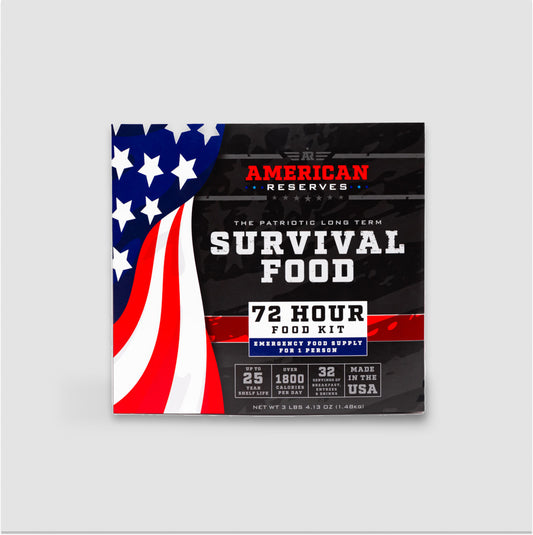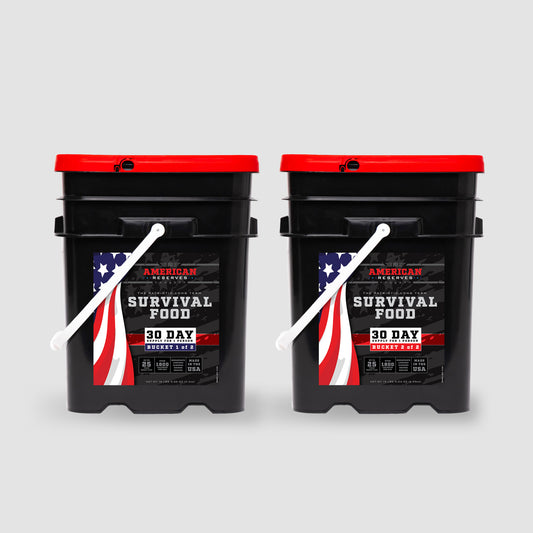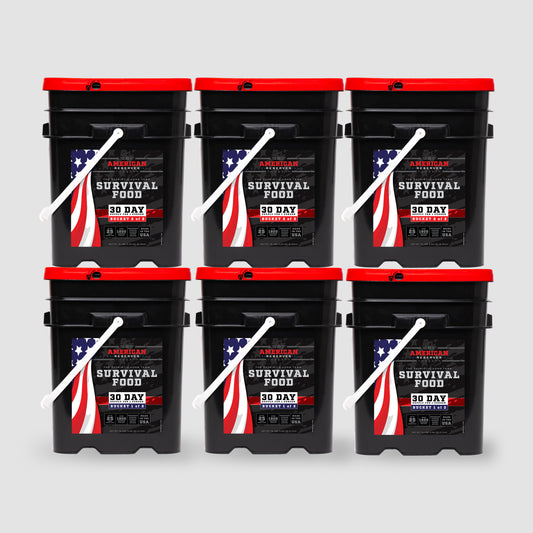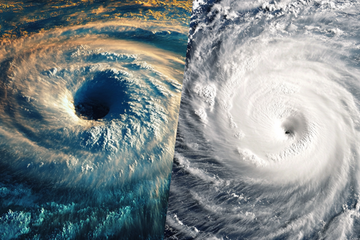
Typhoon vs Hurricane: What’s The Difference?
For the seasoned prepper, knowledge is power, especially when it comes to the formidable forces of nature like typhoons and hurricanes. While these storms share many characteristics, their regional distinctions can significantly impact your preparedness strategies. Whether you're living off-grid in a rural area or navigating the complexities of urban life, understanding these differences is essential. This article aims to equip you with the insights needed to tailor your emergency plans effectively, ensuring you're ready to face whatever Mother Nature throws your way.
What Is a Typhoon?
A typhoon is a type of tropical cyclone that occurs in the Northwest Pacific Ocean, particularly affecting regions such as Southeast Asia, Japan, and the eastern coast of China. These powerful storms are characterized by their intense winds, heavy rainfall, and potential to cause significant damage to both coastal and inland areas. Typhoons form over warm ocean waters, where the combination of heat and moisture fuels their development. As they gather strength, they can lead to storm surges, flooding, and landslides, posing serious threats to life and infrastructure. Understanding the dynamics of typhoons is crucial for those living in vulnerable areas, as it allows for the implementation of effective preparedness measures and the optimization of survival strategies. With climate change influencing weather patterns, the frequency and intensity of typhoons may increase, underscoring the importance of staying informed and ready to respond.
What Is a Hurricane?
A hurricane is a tropical cyclone that forms over the warm waters of the Atlantic Ocean and the Northeast Pacific Ocean, primarily impacting regions such as the Caribbean, the Gulf of Mexico, and the eastern United States. These storms are renowned for their formidable power, characterized by strong winds, torrential rains, and the potential to unleash devastating storm surges. Hurricanes develop when warm ocean water and atmospheric conditions combine to create a low-pressure system that intensifies as it moves across the sea. As they approach land, hurricanes can cause widespread destruction, including flooding, wind damage, and power outages. For those in hurricane-prone areas, understanding these storms is vital for effective emergency preparedness and response. With the increasing influence of climate change, hurricanes are expected to become more frequent and intense, making it essential for individuals and communities to stay vigilant and well-prepared.
Typhoon vs Hurricane: What’s The Difference?
Geographic Location
-
Typhoons: Occur in the Northwest Pacific Ocean, affecting countries like Japan, the Philippines, and China.
-
Hurricanes: Form in the Atlantic Ocean and the Northeast Pacific Ocean, impacting areas such as the Caribbean, the Gulf of Mexico, and the eastern United States.
Naming Conventions
-
Typhoons: The term "typhoon" is used for storms in the Northwest Pacific.
-
Hurricanes: The term "hurricane" is applied to storms in the Atlantic and Northeast Pacific.
Seasonal Timing
-
Typhoons: Can occur year-round but are most frequent from June to November.
-
Hurricanes: Primarily occur from June to November, with peak activity in September.
Intensity and Impact
-
Typhoons: Often more intense due to the vast expanse of warm water in the Pacific, which can fuel stronger storms.
-
Hurricanes: Can be equally powerful but are often influenced by land interactions that can weaken them as they approach the coast.
Preparedness Strategies
-
Typhoons: Require strategies that account for heavy rainfall and potential landslides, especially in mountainous regions.
-
Hurricanes: Necessary plans for storm surges and flooding, particularly in low-lying coastal areas.
Climate Change Considerations
-
Typhoons: May become more frequent and intense due to rising sea temperatures and changing weather patterns.
-
Hurricanes: Similarly, are expected to increase in intensity and frequency, demanding adaptive preparedness measures.

72 Hour Emergency Food and Drink Supply - 32 Servings
$36.99
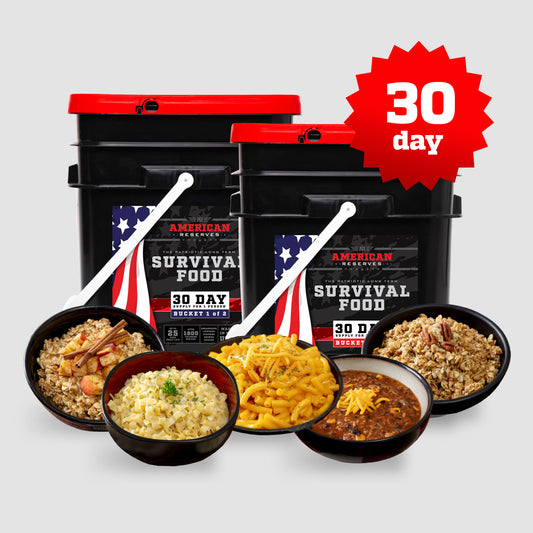
30 Day Emergency Food Supply
$319.99
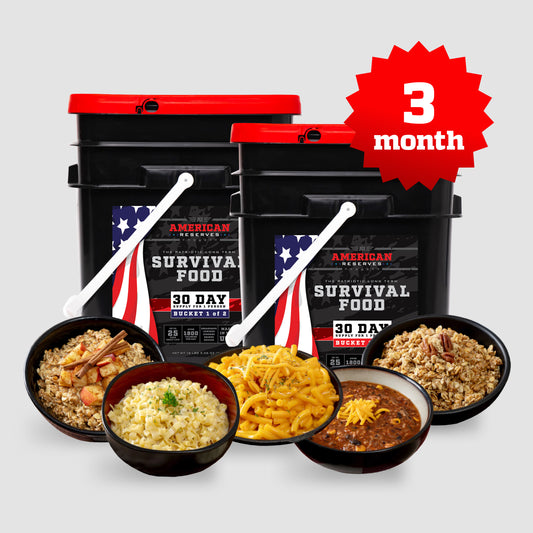
3 Month Emergency Food Supply
$835.00
Why Is Emergency Preparedness Essential During These Storms?
Emergency preparedness is crucial during typhoons and hurricanes due to the immense and often unpredictable power of these storms, which can lead to catastrophic consequences if not adequately anticipated. These cyclones bring with them a trifecta of threats: destructive winds capable of toppling structures, torrential rains that can cause severe flooding, and storm surges that inundate coastal areas. Given the swift intensification of these storms, having a comprehensive emergency plan can make the difference between safety and disaster. Preparedness involves not only securing property and gathering essential supplies but also ensuring clear communication and evacuation plans are in place. As climate change continues to amplify the intensity and frequency of these storms, being prepared becomes even more vital. By taking proactive measures, individuals and communities can mitigate the impact, protect lives, and enhance resilience against the formidable forces of nature.
How Long Do Recovery Efforts Typically Take?
Recovery efforts following typhoons and hurricanes can vary significantly in duration, often depending on the severity of the storm, the level of preparedness, and the resources available for response. In the immediate aftermath, emergency services focus on search and rescue operations, providing medical care, and restoring essential services such as electricity and water. This initial phase can last from days to weeks. The subsequent recovery phase, which involves rebuilding infrastructure, homes, and communities, can extend over months or even years, especially in severely affected areas. Factors such as the availability of funding, the efficiency of governmental and non-governmental organizations, and community resilience play crucial roles in the speed and effectiveness of recovery. As climate change continues to influence the intensity of these storms, fostering robust recovery strategies becomes increasingly important to ensure communities can rebuild stronger and more resiliently.
What Are the Best Practices for Storm Preparation?
-
Develop a Comprehensive Emergency Plan: Establish a clear plan that includes evacuation routes, communication strategies, and designated meeting points for family members. Ensure everyone in the household is familiar with the plan and conduct regular drills to reinforce preparedness.
-
Assemble an Emergency Food Kit: Stock up on non-perishable food items that can sustain your household for at least three days. Include items like canned goods, dried fruits, nuts, and energy bars. Don't forget to account for dietary needs and include a manual can opener.
-
Secure Your Property: Reinforce windows and doors with storm shutters or plywood, and secure outdoor furniture and other potential projectiles. Trim trees and shrubs to minimize the risk of debris causing damage during high winds.
-
Stay Informed with Reliable Sources: Use technology to your advantage by setting up alerts from trusted weather services and downloading emergency apps. Stay updated on storm developments and heed warnings from local authorities promptly.
-
Prepare an Emergency Supply Kit: In addition to food, gather essential supplies such as water, flashlights, batteries, a first-aid kit, medications, important documents, and cash. Make sure your kit is readily available and prepared for immediate use.
Conclusion
In conclusion, understanding the distinctions between typhoons and hurricanes is not merely an academic exercise but a vital component of effective emergency preparedness. These powerful storms, while similar in their potential for destruction, present unique challenges based on their geographic and climatic contexts. By equipping yourself with knowledge about their differences and implementing best practices for preparation and recovery, you can significantly enhance your resilience against these natural forces. As climate change continues to alter storm patterns and intensities, staying informed and proactive is more important than ever. By fostering a culture of preparedness and adaptability, individuals and communities can not only survive but thrive in the face of these formidable challenges, ensuring safety and security for the future.
Final Thoughts
How ready are you for the next big storm? Explore the benefits of American Reserves, offering emergency food supply kits made from high-quality ingredients sourced in the USA. These kits are thoughtfully designed to deliver the vital nutrition necessary to see you through any crisis. With American Reserves, you can face any survival challenge with confidence and preparedness.
Sources
1. https://webassets.inman.com/wp-content/uploads/2017/10/BuildFax-Hurricane-Recovery-Study.pdf
